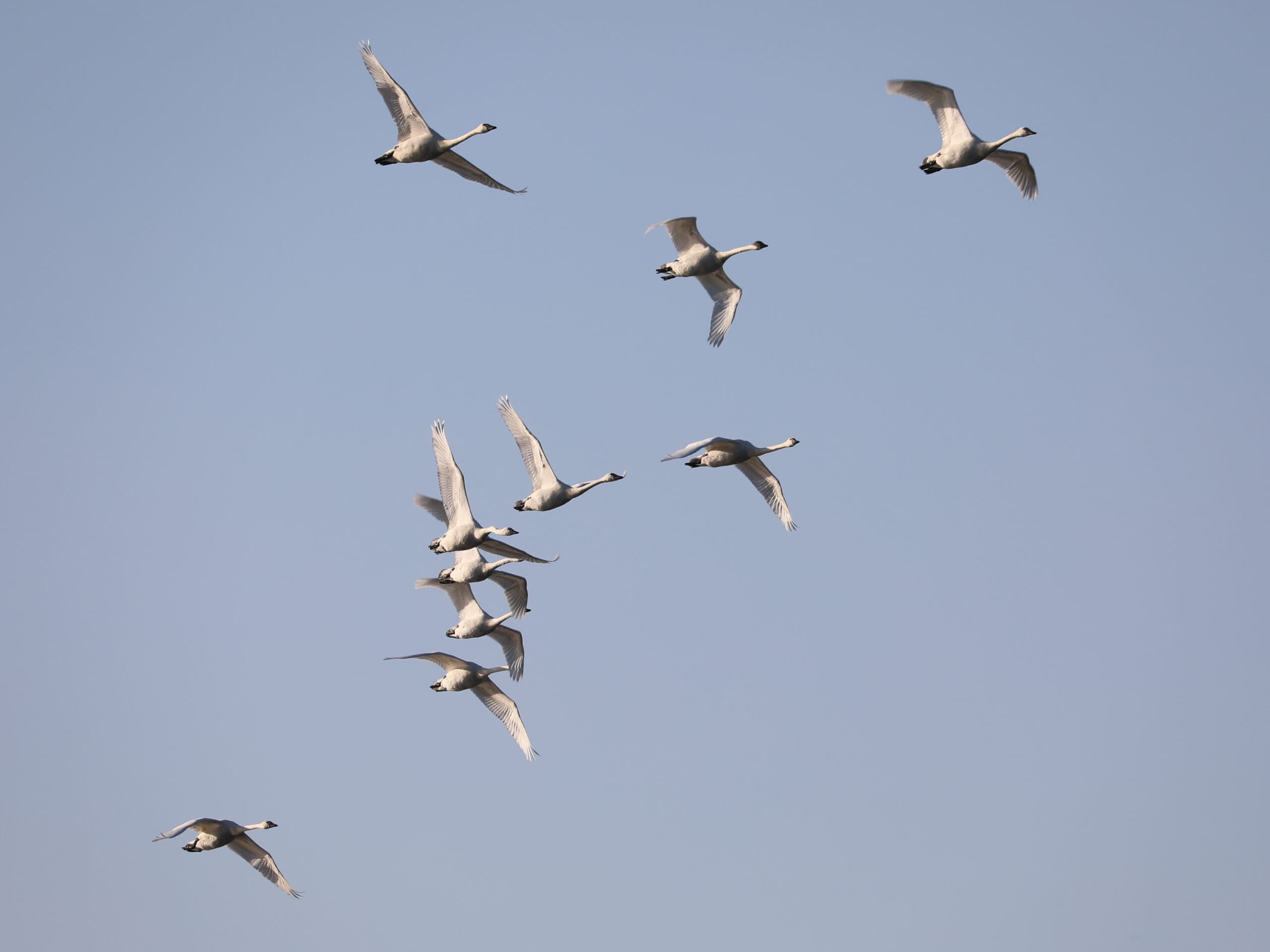Tundra Swans
There are only seven species of swans in the world, and two of them are native to North America. By far the most common is the Tundra Swan, which numbers in the thousands in the Susquehanna Valley in February and March. The larger Trumpeter Swan is more common to the west, although a few show up in Pennsylvania each year. To identify swans, watch for their entirely white plumage and long necks, which are held straight in flight.
Tundra Swans are one of North America’s heaviest flying bird species, weighing in between 13 and 20 pounds. For reference, Great Blue Herons weigh only about 5 pounds, and the largest Bald Eagles are about 14 pounds. The heaviest flying bird in North America is the Trumpeter Swan, at about 26 pounds. Some male Wild Turkeys weigh as much as Tundra Swans, but they rarely fly more than a few hundred feet.
Unlike turkeys, Tundra Swans fly very long distances. The swans that visit the Susquehanna Valley spent the winter along the Atlantic Coast, mostly between North Carolina and New Jersey. They’re passing through now, on their way to their nesting grounds in the tundra of northern Canada. Most Tundra Swans don’t make this long journey alone. In addition to flying in large flocks, most Tundra Swans have a partner. Early in life, Tundra Swans form a pair bond with a mate, and the two often stay together for their entire lives.
Tundra Swans
There are only seven species of swans in the world, and two of them are native to North America. By far the most common is the Tundra Swan, which numbers in the thousands in the Susquehanna Valley in February and March. The larger Trumpeter Swan is more common to the west, although a few show up in Pennsylvania each year. To identify swans, watch for their entirely white plumage and long necks, which are held straight in flight.
Tundra Swans are one of North America’s heaviest flying bird species, weighing in between 13 and 20 pounds. For reference, Great Blue Herons weigh only about 5 pounds, and the largest Bald Eagles are about 14 pounds. The heaviest flying bird in North America is the Trumpeter Swan, at about 26 pounds. Some male Wild Turkeys weigh as much as Tundra Swans, but they rarely fly more than a few hundred feet.
Unlike turkeys, Tundra Swans fly very long distances. The swans that visit the Susquehanna Valley spent the winter along the Atlantic Coast, mostly between North Carolina and New Jersey. They’re passing through now, on their way to their nesting grounds in the tundra of northern Canada. Most Tundra Swans don’t make this long journey alone. In addition to flying in large flocks, most Tundra Swans have a partner. Early in life, Tundra Swans form a pair bond with a mate, and the two often stay together for their entire lives.
About The Author
Dan Hinnebusch is the Ornithologist for Wild Birds Unlimited. Click to learn more.





